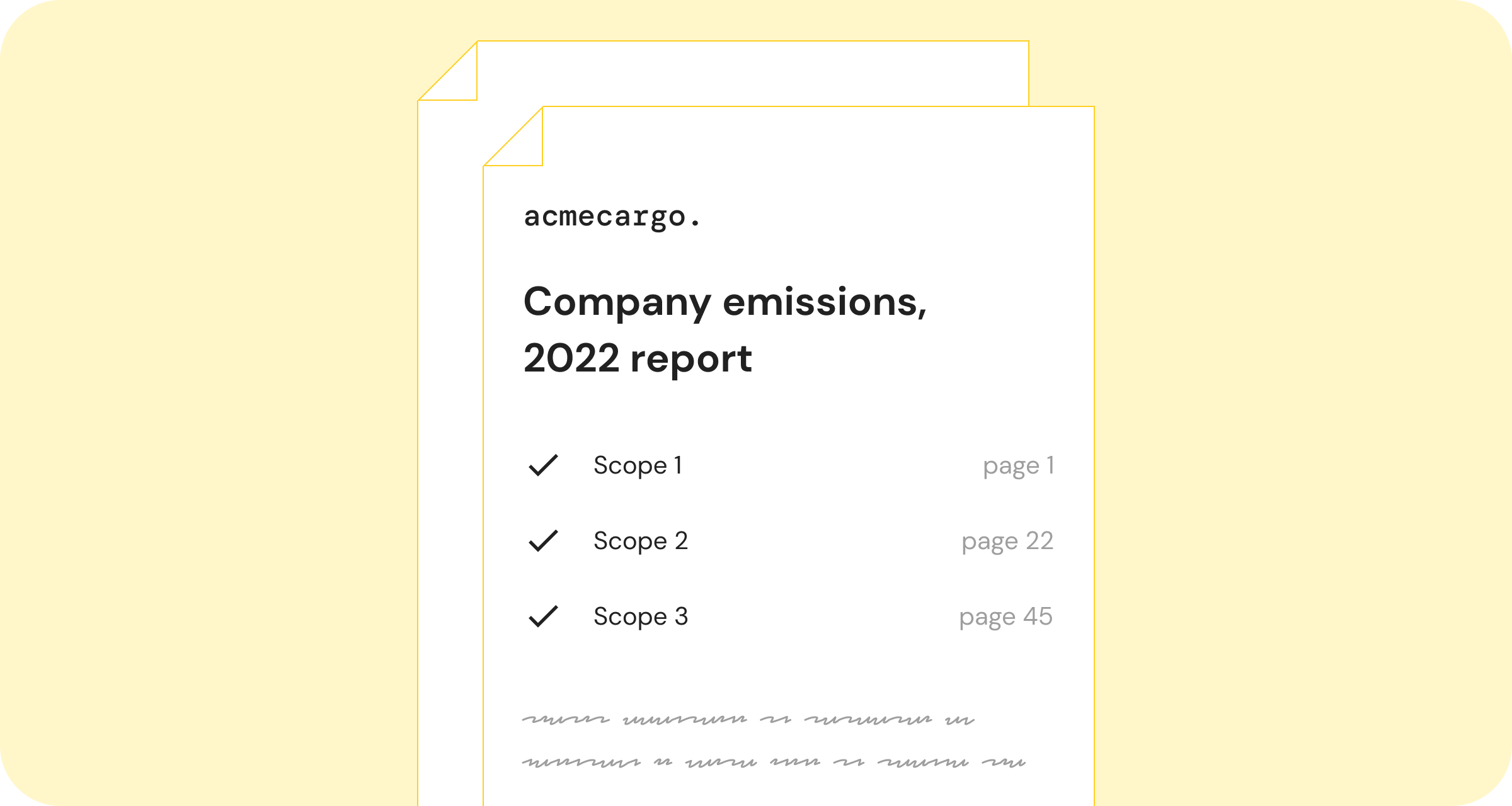

Effective carbon reporting transforms vague climate data into actionable insights that not only help the planet, but also open new revenue opportunities and delight your customers. However, to truly make a difference, your carbon reports must be comprehensive, credible, and easy to integrate into decision-making processes.
It’s hard to find clarity on emissions. It’s even harder to put this data into audit-ready reports for regulators. Here’s how we do it at Lune:
Provide clarity on Scope 1, 2, and 3 emissions
A robust carbon report begins with clearly defined emissions:
Scope 1: Direct emissions your company controls, such as fuel combustion.
Scope 2: Indirect emissions from purchased energy, like electricity from the grid.
Scope 3: All other operational emissions - think supply chain, shipments, business travel, and product use.
Scope 3 is hard to pin down and expansive, so getting a handle on this is essential for accurate emission reporting.
Use standardised methodologies and frameworks
Without consistency, your data is at risk of being unreliable and inconsistent. Use globally recognised standards such as:
- GHG Protocol for setting up transparent, globally recognised, and comparable GHG inventories
- ISO 14064, which provides guidelines for quantifying, monitoring, and verifying GHG emissions across organisations
- Disclosures aligned with TCFD help investors understand governance, risk, and targets
- Voluntary standards like SASB/ISSB enable sector-specific, financially relevant ESG reporting.
Effective reports are more than numbers; they must be transparent and reliable. Governance narratives, data source explanations, and auditability are non-negotiable.
Engage robust data capture tools
We know finding accurate and effective data is hard. The key lies in using scalable, granular emissions calculation tools:
Lune’s API and dashboard enable companies to calculate emissions, whether from logistics, procurement, or transactions. Lune supports activity-based calculations, offering thousands of standard and premium emission factors for precise measurement.
Our tracking and reporting tools provide full transparency about what’s calculated, how, and why, all visualised in an accessible dashboard.
Ensure carbon reporting is tied to concrete outcomes
Carbon reporting shouldn’t be passive; it needs to drive action. Lune surfaces decision-useful insights, like helping logistics organisations identify their highest-emission activities and recommending reduction strategies. It also enables active carbon offsetting through high-quality and vetted carbon projects, enabling businesses to put their insights into action.
Managing expectations of regulators or stakeholders
Regulations and stakeholder expectations are tightening fast:
EU directives like CSRD push for comprehensive, double-materiality reporting across supply chains.
Stakeholders—from investors to customers—expect transparent, standardised, and auditable datareuters.com.
A Lune-backed report positions your business ahead of regulatory curves and aligned with best-in-class expectations.
How we make carbon reporting easier for logistics and spend management
Lune transforms carbon reporting from a tedious checkbox into a growth enabler. With fast API integration, granular emissions modeling, real-time dashboards, and high-quality offsets, Lune ensures your carbon reports are accurate, transparent, and action-ready.
So, what needs to go into carbon reporting?
Ultimately, there are a myriad of factors that need to be considered when it comes to carbon emission reporting, from scopes and frameworks to data quality and stakeholder trust. This is a significant task for any business, let alone one without dedicated sustainability champions. However, with Lune, the process of establishing accurate and decision-useful carbon reporting becomes seamless.
Let’s make carbon visible and meaningful. Book a demo of our carbon reporting functionality that embeds directly into logistics and spend management platforms.
Readers also liked
Readers also liked

Subscribe for emissions intelligence insights
Get the latest updates in the world of carbon tracking, accounting, reporting, and offsetting direct to your inbox.


